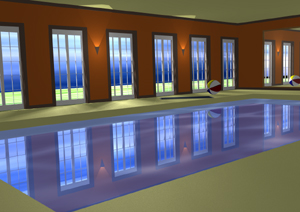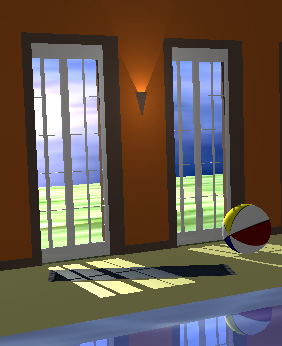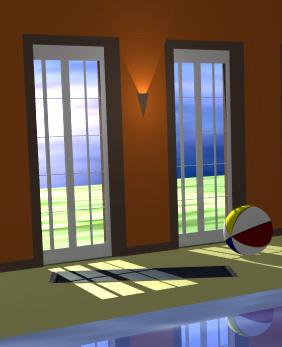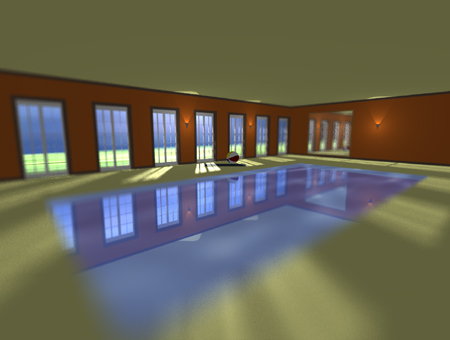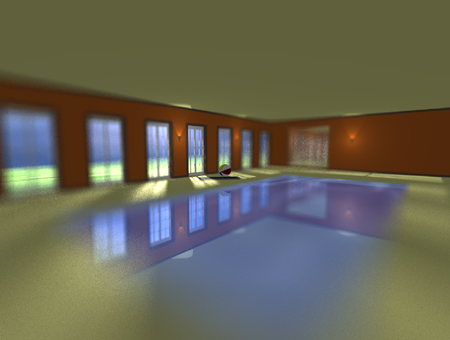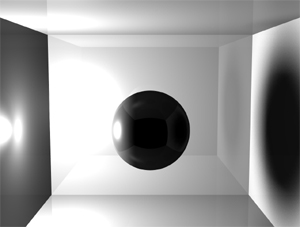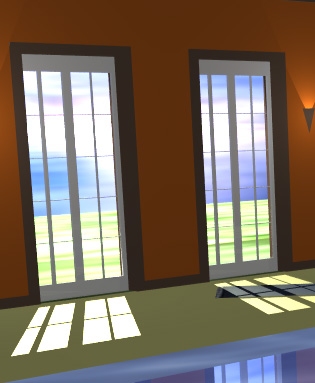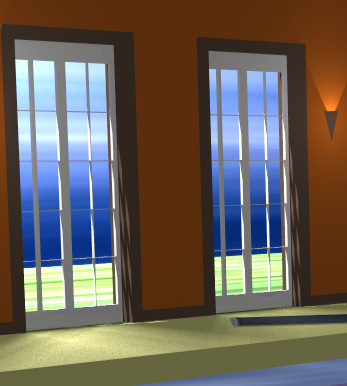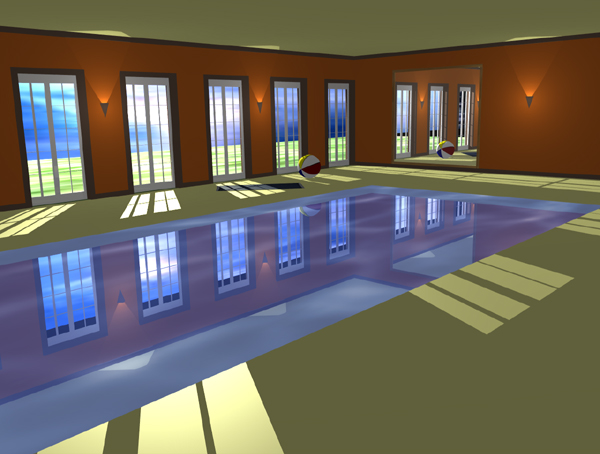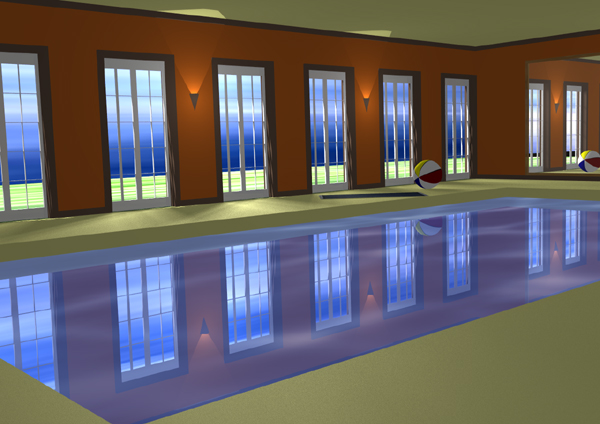|
DEPTH OF FIELD
The depth of
field effect was obtained using jittered eye positions.
The images on
the side, created during the testing phase of this project, are good
examples of focal planes. On picture 3 the focal plane is on the bottle,
so everything else looks blurry. On image 4 the focal plane is on the
image reflected on the mirror, so the reflect image of the bottle is on
focus even though the bottle isn't.
Picture 5 and
6 shows the pool scene with focus on the ball.
On picture 5
the eye position was jittered by a small amount, making everything be out
of focus except the ball.
On picture 6
the eye position was jittered by a big amount, making the out of focus
objects totally blurry. |
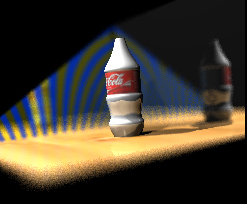
3. The focal plane is on the
bottle |
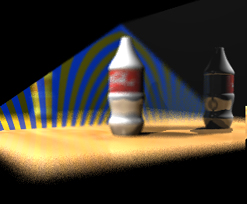
4. The focal plane is on the image on the
mirror |
